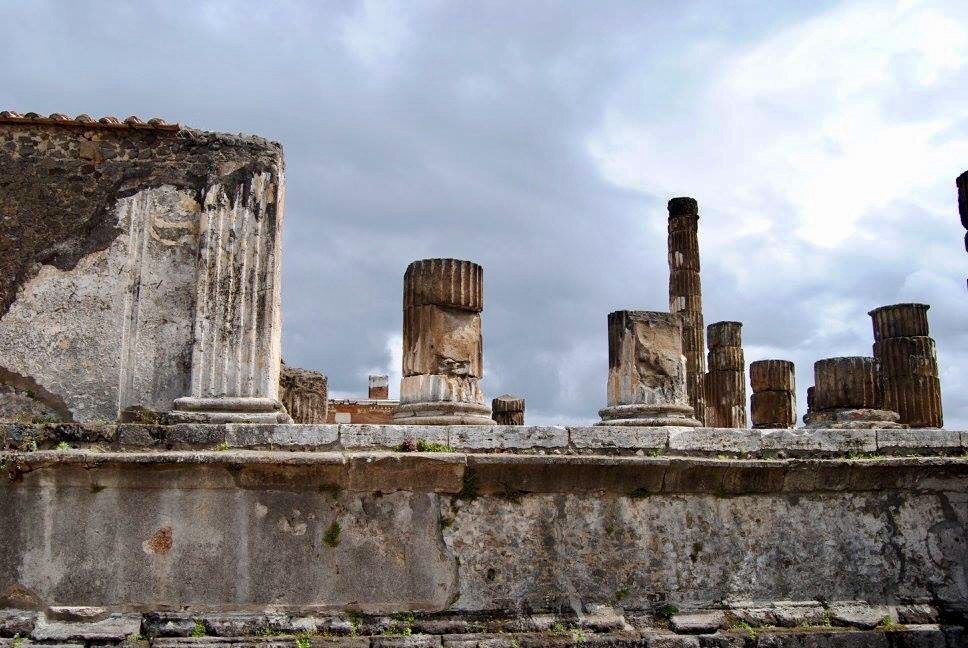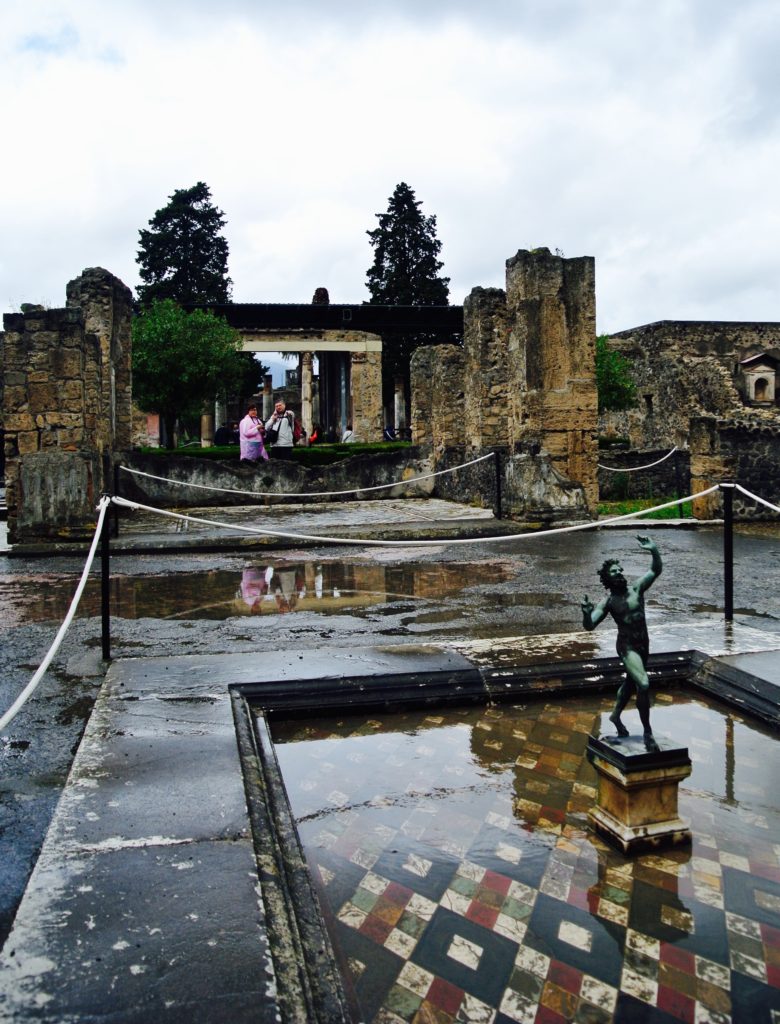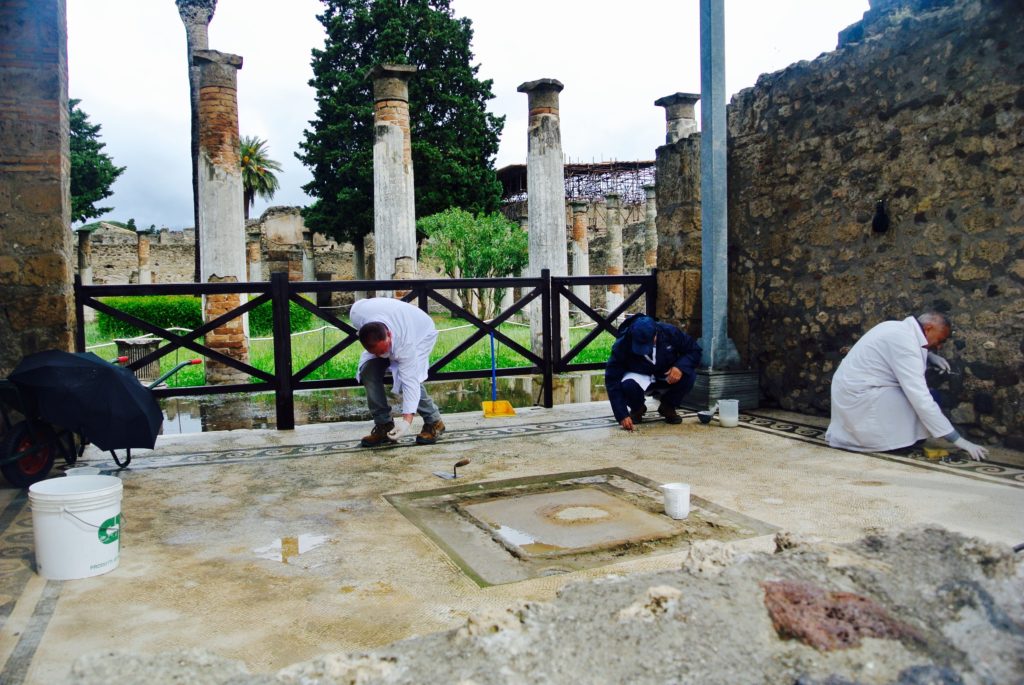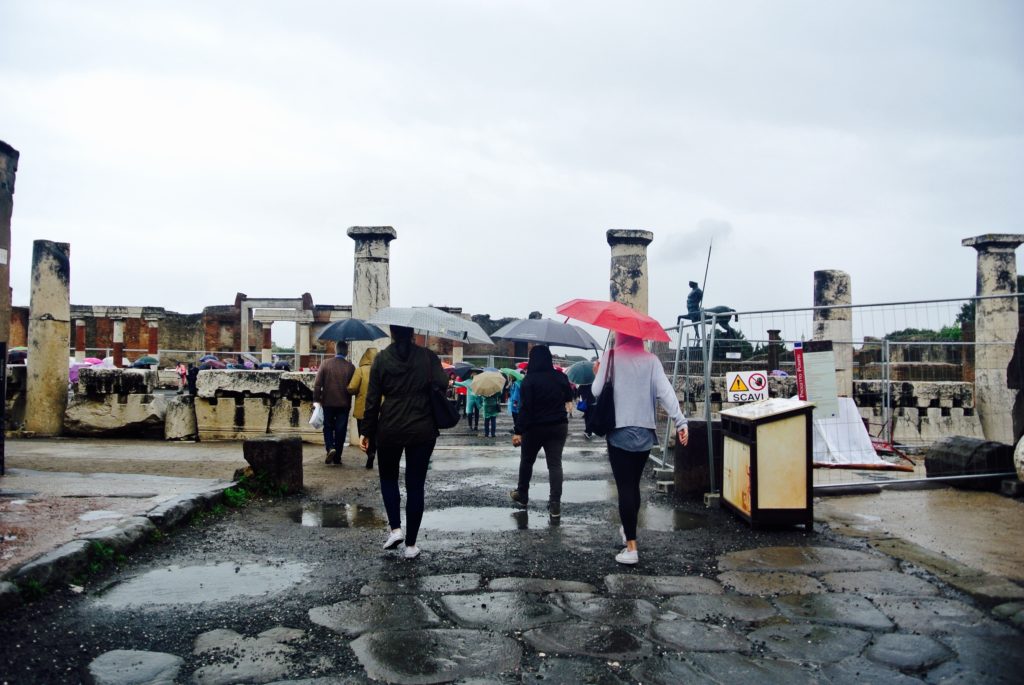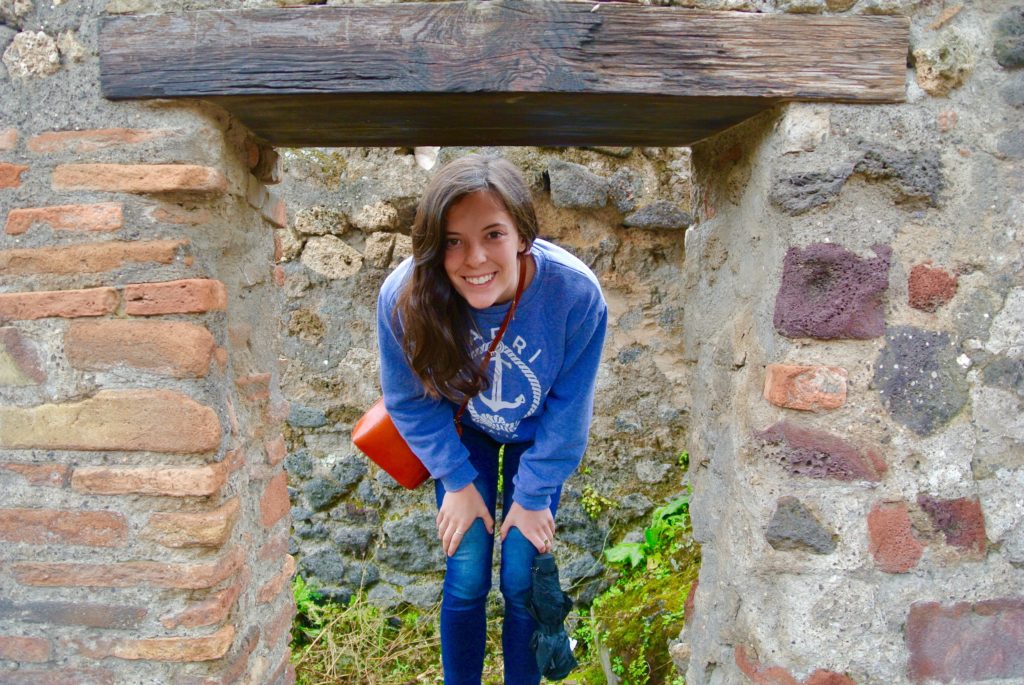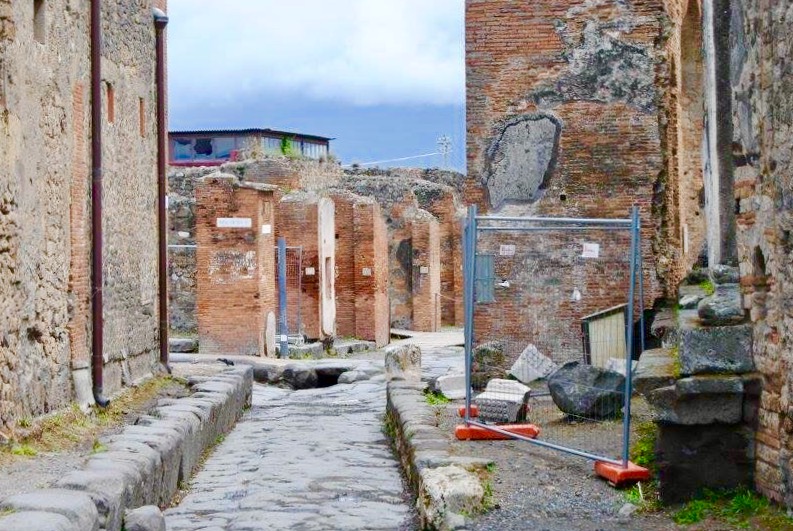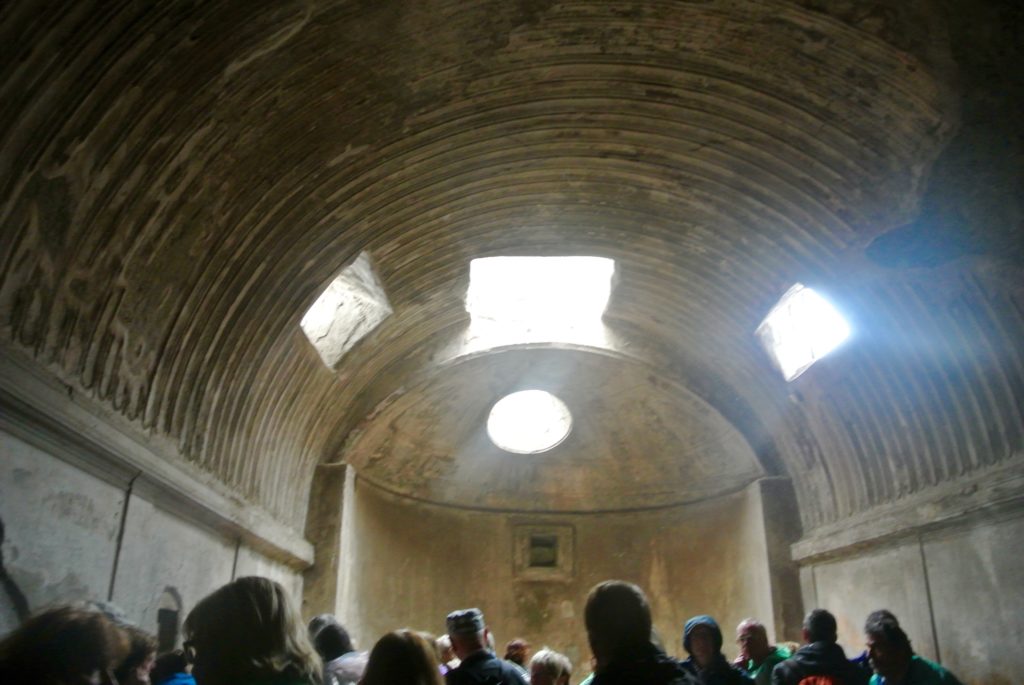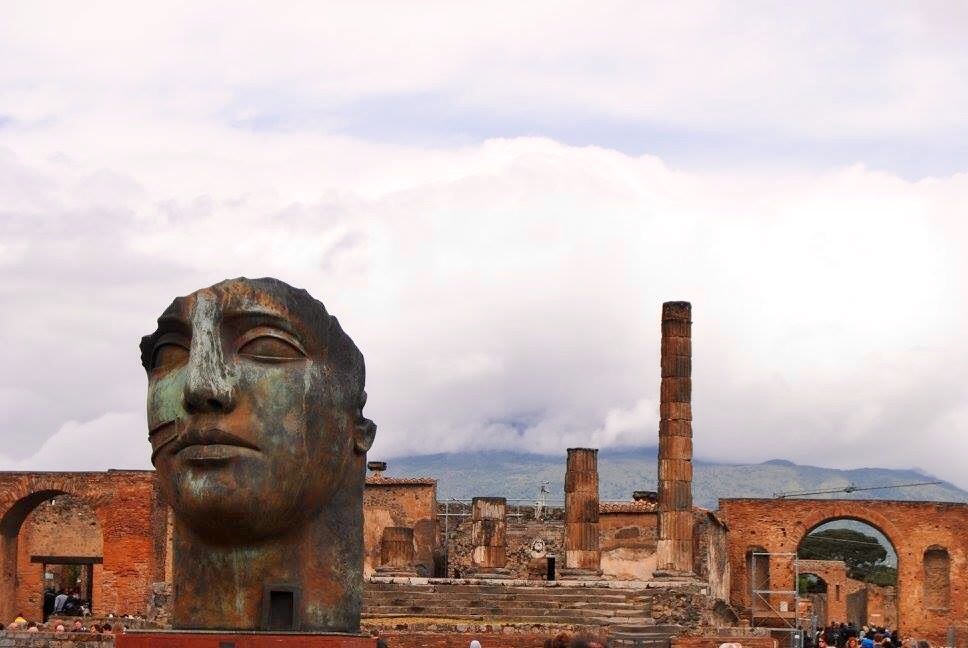First of all, I apologize now for not having nearly as many photos of pieces of information on Pompeii as I would’ve liked. While we were there it rained almost the whole time so I didn’t want to risk getting my camera wet, and I did my best to listen to our tour guide. When we got there we jumped on a tour that lasted probably about an hour or an hour and a half. I would highly recommend getting a tour guide because although it costs money, the site of Pompeii itself is huge, the writings on some of the signs on the ruins are hard to read and you’re so much better off seeing Pompeii with an expert who can point out the little details you would have no clue you just walked right over.
The town itself was really fascinating to see, from the Roman Forum (Pompeii’s version of an amphitheater) and the Roman baths to the ancient shops and panoramic views. You can scroll through some of the photos I was able to take and it’s incredible to stand there and know that the town was constructed around the 9-8th century B.C., although evidence now doesn’t go back beyond the 6th century. While Pompeii flourished for quite some time, the life and splendor was destined to come to an end. The first sign of tragedy was in about 62 A.D., when an earthquake destroyed the city and countryside. They worked hard to recover and many of the less well-off living here just had their houses demolished. A lot of the public and private buildings were still being restored in August of 79 A.D. when Mount Vesuvius became active, and in the span of a few hours, a stream of ash and lava from the volcano buried everything in Pompeii and Herculaneum (a smaller, more-intact site neighboring Pompeii) underneath a blanket of volcanic material meters deep. Many people still living there either fled to the coast, were suffocated by the gas fumes or died in their homes. Reports say more than 2,000 people died and the place was abandoned until it was rediscovered in 1748. Pompeii is so unique because it’s one of the most significant proofs of Roman civilization. Since the city was covered in ash and lava that solidified, it means that the city has remained perserved until today as far as its buildings and items inside the houses and shops are concerned which provide a real look at the daily life in the town 2,000 years ago. If you have the chance to visit I would highly suggest taking a tour because it really lets you take a step back in history and look at things from a new perspective.
